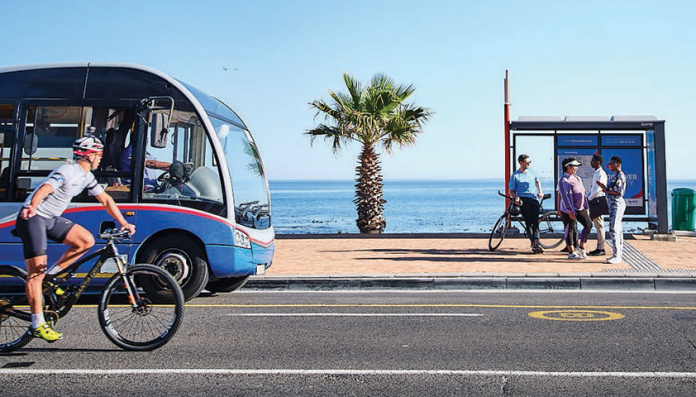Cape Town officials are advocating for increased public transport usage to alleviate the city’s growing traffic congestion. The City is aiming to reduce reliance on private vehicles, but expanding access to public transport systems.
Ushering in Transport Month, the City of Cape Town and the Passenger Rail Agency of South Africa (PRASA) emphasised the benefits of public transport, during a panel discussion on Tuesday. The two transport bodies are now workshopping ways in which it can expand the availability of the Myciti bus service and increase the reliability of trains in the metropole.

One of the key points noted, by the PRASA’s regional manager, Raymond Maseko, is that it is aiming to have trains available at a station every 10 minutes. This regular service, they believe, will significantly reduce the number of private vehicles on the road, easing congestion across the city.
The City’s Mayoral Committee Member for Urban Mobility, Rob Quintas, says this is a welcome development.
Another solution highlighted is the implementation of public transport-only lanes. This follows release of the City’s updated Comprehensive Integrated Transport Plan (CITP) for 2024. It found that 89% of commuter trips in Cape Town are road-based, a figure that City deem unsustainable. Quintas says having public transport-only lanes, is more cost-effective use of road space.
“This will bring a greater return on the high costs of expanding road capacity, is aligned with the City’s objective of prioritising public transport and will facilitate a modal shift from private vehicles to public transport services over time.”
Quintas says the City is also prioritising non-motorised transport infrastructure, like cycle and pedestrian corridors, to encourage safer mobility across the city.
“Congestion Conundrum”
One may argue that expanding roads would alleviate the congestion on them, but Quintas notes that doing so has major limitations. He explained that road expansion is not only expensive and time-consuming but also offers only temporary relief.
Further to that, Quintas notes that new roads typically attract more vehicles, leading to a phenomenon known as “induced demand” (where the additional capacity is quickly filled with more traffic).
Quintas stressed that a sustainable solution lies in shifting commuters from private cars to public transport, particularly MyCiTi buses and passenger trains.
“The City is making its largest public transport infrastructure investment with the second phase of the MyCiTi bus service, connecting communities from the metro-south east with Wynberg and Claremont. This, alongside the restoration of the rail service, forms the backbone of a more efficient transport system.”


